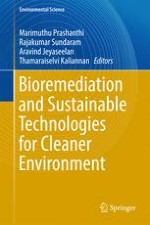2017 | OriginalPaper | Chapter
Bacillus tequilensis A Novel Thermotolerant Strain for Effective Bioremediation of Melanoidin Pigment in Its Natural Environment
Authors : N. Rameshkumar, S. Dhanapaul, M. Krishnan, N. Kayalvizhi
Published in: Bioremediation and Sustainable Technologies for Cleaner Environment
Publisher: Springer International Publishing
Activate our intelligent search to find suitable subject content or patents.
Select sections of text to find matching patents with Artificial Intelligence. powered by
Select sections of text to find additional relevant content using AI-assisted search. powered by
